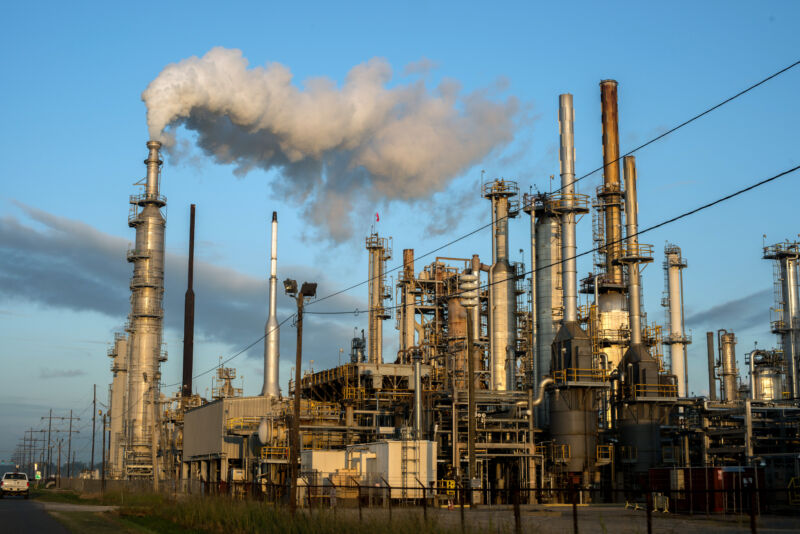
Enlarge / Smoke billows from one of many chemical plants near Baton Rouge, La. ‘Cancer Alley’ is one of the most polluted areas of the US and lies along the once pristine Mississippi River that stretches some 80 miles from New Orleans to Baton Rouge, where a dense concentration of oil refineries, petrochemical plants, and other chemical industries reside alongside suburban homes. (credit: Giles Clarke/Getty Images)
Plastic pollution usually conjures images of grocery bags blowing in the wind or nurdles lodged in a seabird’s stomach. But soon, plastic pollution may take on another meaning, as a new report forecasts that the industry’s greenhouse gas emissions in the US will outpace those of coal by the end of the decade.
“Unlike the plastic trash choking our waterways and littering our communities, the plastic industry’s devastating impact on our climate is taking place under the radar, with little public scrutiny and even less government accountability,” Judith Enck, president of Beyond Plastics and a former EPA regional administrator, said in the report.
Plastic is a large but often overlooked source of carbon pollution. Production in the US creates at least 232 million metric tons of greenhouse gases, according to the report by Bennington College and the nonprofit organization Beyond Plastics. Plastic production is expected to emit another 55 million tons by 2025 if the 42 plants currently planned or under construction come online.
